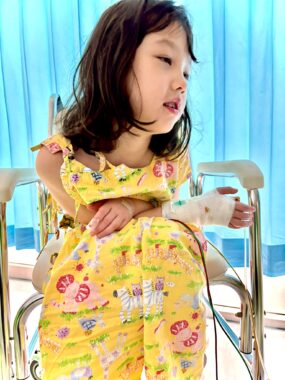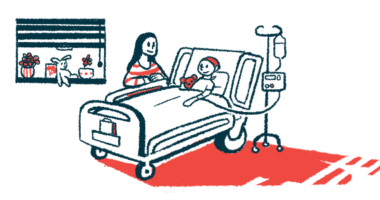2 steps forward, 1 step back: Lessons from a crisis
Amid years of healthy progress, a blood-sugar scare proves cautionary

Rylae-Ann, my daughter, was born with aromatic l-amino acid decarboxylase (AADC) deficiency, an ultra-rare neurotransmitter disorder that disrupts the production of dopamine and serotonin. Before she received life-changing gene therapy at 18 months old, even basic developmental milestones felt like mountains. Since gene therapy, she’s made amazing strides in walking, talking, learning, and living a life full of promise.
But even now, my wife, Judy, and I remain vigilant.
We’ve carefully built a daily routine around her needs, incorporating structured sleep, academic and physical enrichment, dietary restrictions, and a blend of supplements to support her overall health. Her body and brain function in a delicate equilibrium. The wrong food, lack of rest, or environmental stress can tip the balance.
And that’s exactly what happened.
Tummy trouble
It started with something so small: a random street-stall snack we hadn’t approved. That Friday night, she had a tummy ache. By Saturday, she had soft stools. On Sunday, she had no appetite, even when we tempted her with her favorite comfort foods. And on Monday morning, despite waking up normally, she said she didn’t want to go to school, which is a red flag for a child who usually races to the door with excitement.
Judy left for school first while her mother, Popo, stayed behind to bring Rylae-Ann a bit later. Not long after, Judy’s phone rang. She expected an update that they were on the way. Instead, she heard panic in Popo’s voice. Rylae-Ann had collapsed with a severe bout of diarrhea and was now unconscious.
Judy rushed home and called me. Fortunately, my school is nearby. When I arrived, I saw Judy carrying our daughter’s limp body, tears streaming down her face.
I told Judy to jump into the back seat with Rylae-Ann, and we took off. In other parts of the world, we might’ve called an ambulance, but in Bangkok traffic, driving ourselves was the fastest option. I feared the worst. She was breathing, but unresponsive.
My mind flashed back to a warning from Professor Paul Wuh-Liang Hwu in Taiwan, who was her primary physician there: Hypoglycemia could be fatal for AADC children, even after gene therapy. I reached into the car console and handed Judy some candy, telling her to chew it and try to get the sugary liquid into Rylae-Ann’s mouth. She couldn’t swallow, but we hoped just a little sugar could buy us time.
Fifteen tense minutes later, we burst through the doors of the nearest hospital. I carried her straight into the emergency room, bypassing reception. Thankfully, the team jumped into action. A quick test confirmed it: Rylae-Ann had critically low blood sugar.
After a glucose injection, she began to respond.
That’s when it hit us: We’d come terrifyingly close to losing her.
A system of compassion

Rylae-Ann prepares to leave intensive care and transfer to the general ward. (Photo by Richard E. Poulin III)
In moments like these, you’re reminded how fragile life is — and how powerful compassion can be.
With Judy recently resigning from her job, Rylae-Ann’s insurance was in transition, and her new plan with my school wouldn’t start until August. Yet the ER doctor, touched by Rylae-Ann’s story, especially after reading about her condition on AADC News, graciously offered a 50% discount. In Thailand, where healthcare is more accessible than in many parts of the world, this act of kindness lifted a heavy burden from our shoulders.
After two days in the intensive care unit and another in the general ward, Rylae-Ann was discharged. Tired but smiling, she asked, “Can I go back to my summer class now?”
In the world of rare diseases, progress often appears to be two steps forward, one step back. It can feel discouraging. Just as your child seems to be soaring, something pulls them (and you) down again.
But here’s the truth: Setbacks are not the end of the story.
They’re reminders. Reminders of the fight we continue, the love we give unconditionally, and the resilience that lives in these extraordinary children. Rylae-Ann may have stumbled, but she got back up, and so did we. We’ll continue to face the unexpected, prepare as best we can, and move forward again, step by step.
Because that’s what this journey is all about. Not perfect progress, but persistent hope.
Note: AADC News is strictly a news and information website about the disease. It does not provide medical advice, diagnosis, or treatment. This content is not intended to be a substitute for professional medical advice, diagnosis, or treatment. Always seek the advice of your physician or other qualified health provider with any questions you may have regarding a medical condition. Never disregard professional medical advice or delay in seeking it because of something you have read on this website. The opinions expressed in this column are not those of AADC News or its parent company, Bionews, and are intended to spark discussion about issues pertaining to aromatic l-amino acid decarboxylase deficiency.








Leave a comment
Fill in the required fields to post. Your email address will not be published.